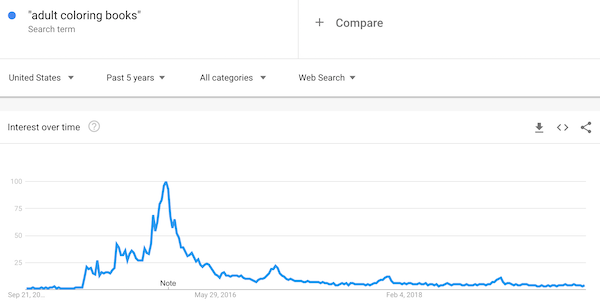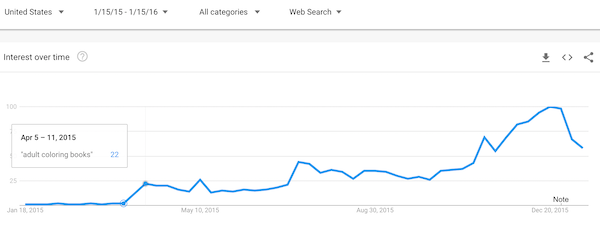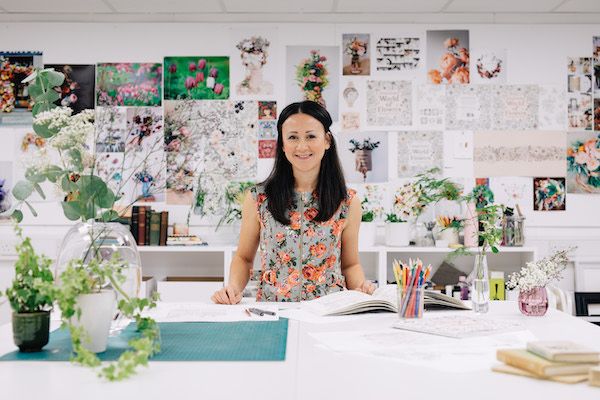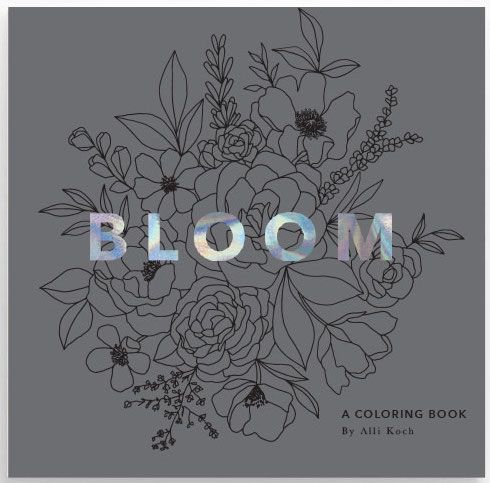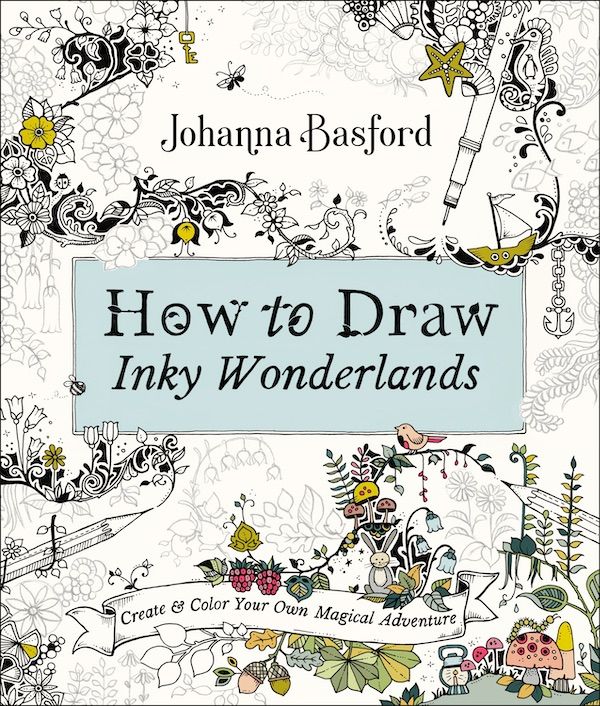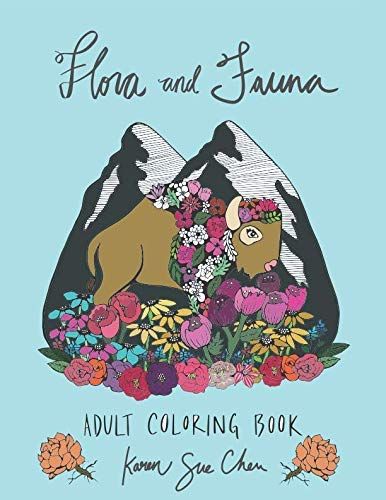A Brief History of Adult Coloring Books
One of the earliest memories I have of childhood is coloring. I wasn’t coloring princesses or dragons, though, I was shading in spleens and quadriceps, clumsily navigating arteries and finger bones. In what I can only guess was an effort to keep me quiet, my mother had let me play in her anatomy coloring books that she used during nursing school, a useful kinesthetic tool she used for memorization. All that to say, coloring books for adults were not a 2015 invention. They actually started closer to these anatomical coloring books. The first coloring pages were used as artistic training for adults in the 17th century, with little emphasis on creativity. An oft-repeated statistic is that in 2014, one million copies of adult coloring books were sold. In 2015, the number jumped to 12 million (the following chart taken from Google Trends).
Finding the start of that jump (particularly in the U.S.) brings us to a four-minute interview on April 1, 2015.
The Start of a Trend
“How many stressed out 7-year-olds do you know?” Johanna Basford asked in an NPR All Things Considered interview. The show clip had opened with “confessions” from a variety of women who admitted to coloring—either with their children or during hospital stays or in coloring clubs—and then cut to Basford, the illustrator of Enchanted Forest, her break-out coloring book (though she had published others before). And, if we look at a graph (again pulled from Google Trends) of the popularity of the search term “adult coloring books,” the first jump occurs right in the week of this interview.
Adult coloring books likely would have still become a trend in the U.S. without this start, but something must have resonated for the NPR listeners that day. In the interview, Basford explains the process behind her black-and-white line drawings, but that’s quickly eclipsed by her enthusiasm about the benefits of adult coloring, Basford noting that it’s a quiet, handheld “analog” activity. Enchanted Forest went on to become a New York Times bestseller, selling millions of copies, but it also heralded the meteoric rise of other new publishers in the space. Blue Star Press was among the smaller houses that began publishing adult coloring books in 2015 and found themselves with breakout hits. A small operation, they published their first coloring book in early 2015, Stress Relieving Patterns, which became a New York Times bestseller. I recently spoke with Peter Licalzi, the co-founder and CMO of Blue Star Press. He notes that the demand for Stress Relieving Patterns “just kinda blew up. Between months 1–4 [after publishing], the growth was exponential.” This subcategory of books dominated the 2015 holiday season and became one of the best-selling gift items of the year. They sold out bookstores and printing runs, consumers clamoring for more. It was a trend driven largely by Millennial women, as Nielsen reported about buyers: “[I]t’s primarily younger women. Some 71% of genre buyers are female, with the largest representation coming from the 18–29 age group; Millennials overall are 29% more likely to buy an adult coloring book than all buyers.” As with all fantastically lucrative, female-driven trends, think-pieces appeared quickly. Writers called it a “sad” cry for help, pointing to adults who craved a return to the carefree activities of youth, bolstering their arguments by the reemergence of adult summer camps and preschool.
Why Adult Coloring Books?
Years after the fact, we can only speculate at the sudden demand for adult coloring books. There was nothing sad about it, though. With any huge trends, there are always multiple and overlapping motivations behind their rise, but most importantly, they speak to an unmet need of a community. As Basford noted, it may have been that coloring was an analog hobby that could break our smart phone habits. Or maybe, it’s more simple. Coloring was fun and affordable. For $20 or less, readers could start a hobby with the potential to fill hundreds of hours with zen-like stress relief. Likely, the appeal was all of these things and more. I recently talked to (the incredibly wonderful) Johanna Basford about her take on the adult coloring books genre and why it resonated with so many people. Her thoughts about this are similar to what they were in 2015. In our interview, she noted that: “I think people were craving a digital detox. Social media, smart phones, rolling news—all these things make us constantly connected to the world, never really focusing on something for an extended period time and always distracted by pings or notifications or screens. Colouring gave people an accessible way to be creative and treat themselves to some digital detox time.” During our interview, Licalzi with Blue Star Press took this idea further. He thinks the stress relief factor was a major part of the trend, but also mentioned the rise of Instagram’s popularity at the time. Bright coloring pages fit the social media site perfectly. (A side note: hobbies that are both beautiful to share on Instagram but also offer mindfulness benefits are a sure recipe for a trend. Just ask bullet journalers and plant parents today.) Instagram also encouraged normal people to explore their creativity, Licalzi noting that: “I feel like coloring did the same thing. It created a lot of people who appreciated art and gave them the confidence to begin creating their own for the first time. It was this perfect storm of Instagram, the desire to be an artist, and a focus on health and wellness.” I believe there was something else there, too, if we look back on that period. In their own way, some of those think pieces about adult coloring books were right. Not in their derision or scorn, but in their underlying intuitions. For a brief time, the bookish (and wider) world joined in an online and IRL coloring circle that was bright and joyous. It was idealistic in the way that children are. And, looking back, it was idealistic in the way most of us Hillary supporters were at that point—sure that that the world was bright and forward-thinking and on the cusp of greatness. In that world, we could have our first female president and work-life balance and daily doses of colorful Instagrammable mindfulness, thankyouverymuch. Basford’s Enchanted Forest and other adult coloring books beckoned us into their pages, but many of us were already there waiting, eager to explore the limits of our creativity and joy.
The End of the Trend
It’s possible to point to that NPR interview as the potential catalyst behind the adult coloring books craze in the U.S., but it’s far more difficult to point to where the height of the trend ends. The 2015 holiday season was both coloring’s highest point and also the start of its decline. The creative, joyous output of adult coloring books continued strongly throughout the 2016 summer, but then fizzled. In that summer, many of us put down our colored pencils and went outside to play Pokémon Go. But in November of 2016, our free and creative time transformed again. Instead of coloring, we were drafting postcards to our representatives and knitting pussy hats. Following Twitter and rallying voters. By then we were more anxious and distressed and tied to our phones than ever, but perhaps we no longer trusted that a pile of colored pencils and coloring books could help us find stillness.
Are adult coloring books still selling?
It may not be as big of a trend as it used to be, but there is still a steady market for adult coloring books and a group of coloring enthusiasts online who share their art and passion with the world. Many are hopeful that the genre is growing again, with new types of coloring books out this holiday season. Today, the market is essentially split into a few categories. Unfortunately, with a variety of platforms and protected data, it’s difficult to point to exact sales numbers. There is also a strong how-to and crafting component to these books, though, so it makes sense that a sizable portion of sales occur at craft stores like Michaels and Jo-Ann stores. And, as we approach the 2019 holidays, that original segment of the market is picking up steam again, too: stand-out, high-quality coloring books that can command higher prices.
What’s next with adult coloring books?
Simply put, quite a bit. At Blue Star, they’re releasing one of their first new coloring books in years. They set out to make something “beautiful and entirely different” with a higher production value and a big name behind it. With fuzzy velvet pages, perforated pages, and premium paper, Bloom: A Coloring Book by Alli Koch (@Allikdesign on Instagram, out in November 2019) promises a gorgeous coloring experience.
Johanna Basford also published a new book in October 2019: How to Draw Inky Wonderlands: Create and Color Your Own Magical Adventure that will teach readers “no-skills-needed secrets” for drawing.
From the beginning, Basford notes that her mission has always been to help people “pick up a pencil and be creative.” Her newest book also celebrates the supportive online community that has developed since the initial rise in adult coloring books, her favorite part of her work. Basford notes that: “The colouring and creative community online and IRL is huge. People are collaborating, sharing tricks and tips, sharing their work and cheering on their co-creators. It’s such a warm spirited and wonderful group to be part of. These days, there’s a trend towards sharing skills. Helping other people to learn a trick you have discovered, explaining a new technique, giving advice on how to blend a certain type of pencil. I think the spirit of social media is less ‘look at me and all this fancy stuff I have’ and more ‘hey! look at this cool thing I can do! Here’s how you can do it too!’” If you were ever frustrated with the sheer size and undertaking of some designs, you’ll find that more are bite-sized or organized into daily bursts of creativity or devotionals. And, our post on the best adult coloring books of 2019 showcases books with whimsical landscapes again, like Karen Sue Chen’s Flora And Fauna: A Coloring Book for Adults.
Hidden within the bestselling coloring books, there’s also the hint of the next trend gaining in popularity: drawing books, like Basford’s newest release. It makes sense. Like coloring, drawing is inexpensive and meditative and easily Instagrammable. In the optimistic years of 2015, adult coloring books showed us how to color beautifully within the lines. In 2019 and beyond, drawing books promise to teach us how to draw the lines themselves.

